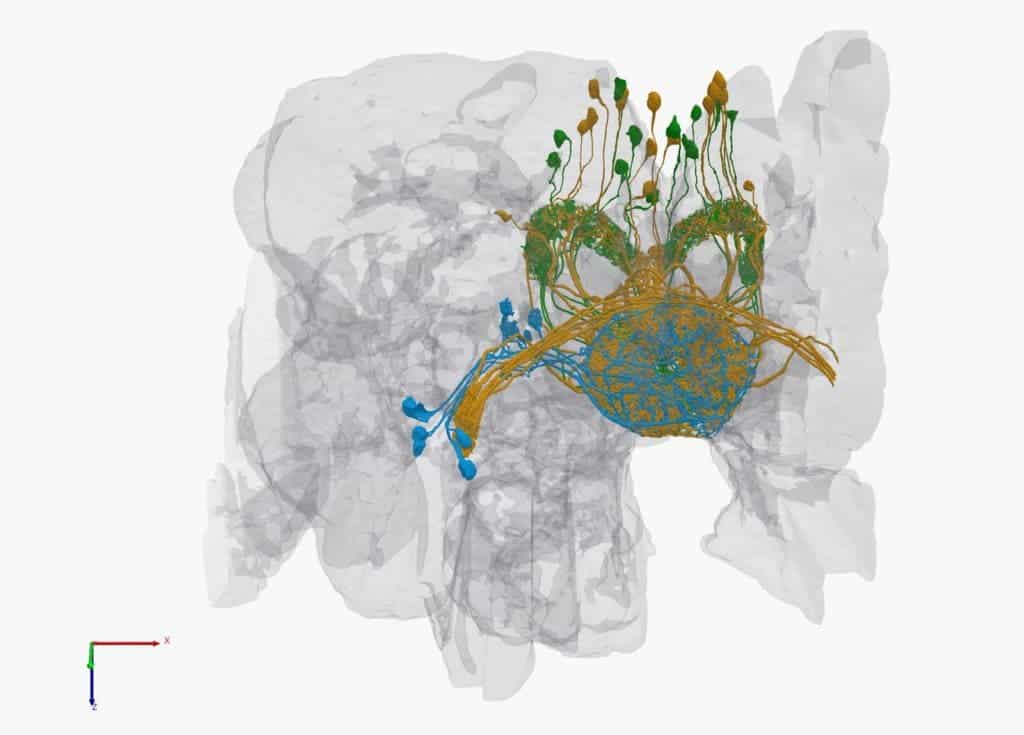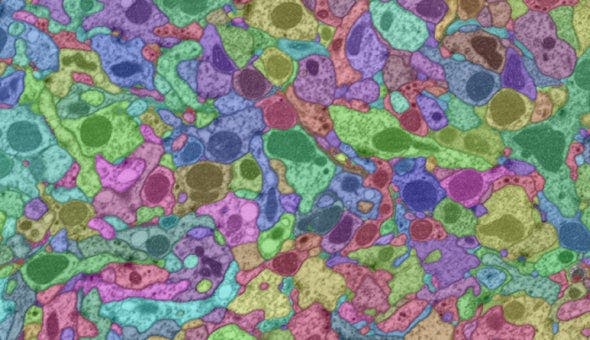Despite having a brain no larger than a poppy seed, fruit flies (Drosophila) are quite intelligent creatures, having a great memory and navigational capabilities.
Now, after 12 years and $40 million investment, scientists have announced that they have completed mapping much of the fly’s connectome — a three-dimensional wiring diagram of the brain — including 20 million synapses connecting 25,000 neurons.

In order to map the fruit fly’s brain circuitry, researchers at Google and the Janelia Research Campus in Virginia, working together as the FlyEM group, first sliced the insect’s already tiny brain into sections each only 20 microns thick. After mapping each slab, these were stitched back together to form a complete 3-D digital diagram covering millions of synapses.
This was an extremely cumbersome and delicate process as even the tiniest imaging error could cause disastrous rippling effects across the entire data set.
Not all of the fruit fly’s brain was mapped out. Instead, efforts were focused on the hemibrain, a region about the size of a dust mite that controls functions like learning, memory, smell, and navigation.

Some of this neural circuitry is very similar to our own, which suggests it was inherited from a distant common ancestor. In fact, this is what makes this 3D brain map so important — it can now be used as a schematic that researchers can check in order to better understand the brain’s wiring and how psychiatric disorders arise. The applications for neuroscience and drug discovery, for instance, could be immense.
According to Gerry Rubin, executive director of the Howard Hughes Medical Institute’s Janelia Research Campus, neuroscientists can use this diagram to navigate the brain and its functions like a person would use Google Maps on their phone to travel to a destination of interest.
Of course, it would be ideal if researchers could work directly with a complete human connectome. Alas, such a task is unfeasible today — it took considerable time and effort to map the brain of a creature’s brain with a million times fewer electrons than us.
Drosophila is the second species to have its brain wiring mapped at such a high level of detail, following that of the nematode C. elegans, which has only 7,000 synapses connecting 302 neurons. Elsewhere, other researchers are mapping mammalian brains, one section at a time. For instance, a group at the Allen Institute in Seattle has created a similar map of a cubic millimeter of the mouse brain.
Other connectome projects currently underway around the world include mapping the brain circuits of songbirds involved in learning songs, as well as a tiny region of the human brain.
While such efforts are currently prohibitively expensive, scientists hope that developments will mirror those of the genome project. It cost billions to sequence the first human genome in 2001, whereas now it costs as little as a couple of hundred bucks.
To get there, science has to make incremental steps forward. Researchers hope to one day map all of the mouse’s 75 million neurons, a project that might cost $500 million at the very least. In the meantime, the flyEM group hopes to map out the complete fruit fly brain connections within the next two years.
The fruit fly’s brain wiring map was posted on Janelia’s Web site, along with an accompanying manuscript on the preprint server bioRxiv.


